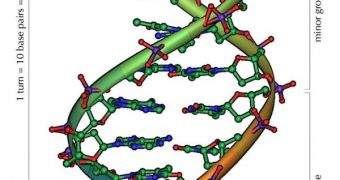Genetic researchers have managed to come across a significant breakthrough in the field, after they identified a plant, namely the mouse-ear cress (Arabidopsis thaliana), which contains in its DNA a sequence that is strikingly similar to that found in the genetic information of people suffering from serious diseases such as Fragile X Syndrome, Huntington's disease, and Fredereich’s ataxia. The science team, led by University of Queensland’s School of Biological Sciences professor Dr Sureshkumar Balasubramanian and Max Planck Institute for Developmental Biology professor Dr Detlef Weigel, published its finds in the January 15 issue of the journal Science.
Neuronal diseases such as the aforementioned three are extremely severe, and sufferers have little chances of getting better over time. By finding naturally-occurring DNA to be studied instead of the human one, researchers will now be able to work a lot faster in finding a cure, as multiple generations of the plant could be studied simultaneously to determine what variations occur in which portion of the strand, what has led to the mutation, and how it can be reversed. “It opens up a whole new array of possibilities for future research, some of which could have potential implications for humans,” Dr Balasubramanian explains. He adds that “triplet repeat expansions” in DNA, which cause all three diseases, get worse in time, meaning that the offspring of people who carry the disease might get a more advanced form. However, as of now, there are no sustainable ways of studying this, due to the long time frames involved, which often take decades. By analyzing the plants, which take only months to grow, scientists could get a glimpse at what lies ahead, and could anticipatively devise novel treatment methods to address problems that have not yet occurred. On a lighter tone, this would add a totally new meaning to the expression “preventive medicine.” Researchers have only recently begun investigating distant organisms in search of DNA strands that fit those generated by a genetic disorder. It's through this method that the science team at the University of Queensland and the Max Planck Institute has managed to come across this major breakthrough.
The breakthrough could solve numerous genetic disorders
hot right now

 14 DAY TRIAL //
14 DAY TRIAL //